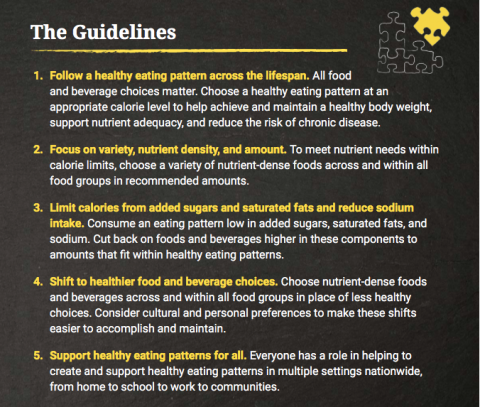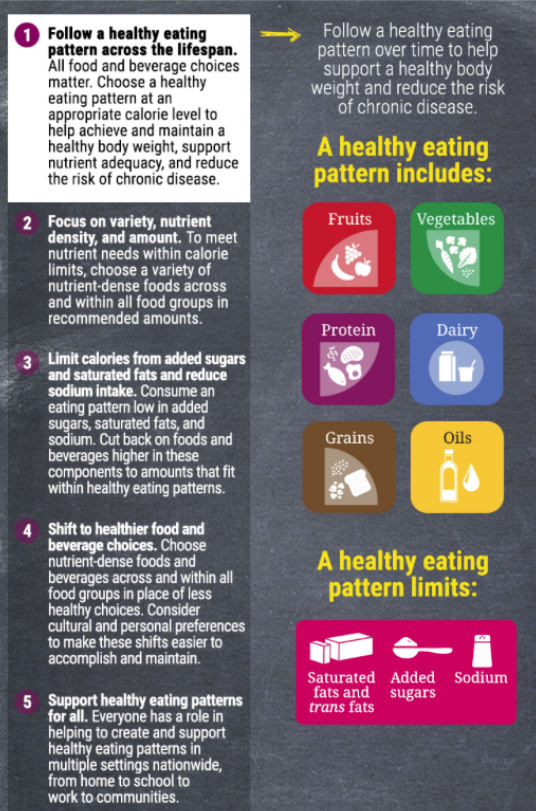
Earlier this month the government released new Dietary Guidelines for Americans, which provide important nutrition guidance that helps everything from families to federal programs align with the latest thinking around health and nutrition. For example: nutrition labels on products? Based on the Dietary Guidelines. So are the school meal programs and WIC. Here are a few more things you should know:
Key elements of the new guidelines:
- Limiting the consumption of added sugar to less than 10% calories per day. Many are hoping the FDA will now, as a result, include a line for “added sugars” on the nutrition facts labels.
- Limiting salt intake to 2300 milligrams/day (average consumption in US is 3400 milligrams/day). The main source of sodium? Processed foods.
- Increasing consumption of fruit and vegetables. While this recommendation has appeared on earlier versions of the guidelines, this year it tops the list.
- Focusing on lean meats like chicken. While the expert committee advising the process noted last year that a sustainable diet higher in plant-based foods and lower in animal-based foods is better for both our health and the environment, the final guidelines fall short of specifically recommending cutting meat consumption. However Friends of the Earth has noted that “the findings and portion size recommendations buried deep in the report suggest that Americans do in fact need to be eating less meat.”
Where did the guidelines come from anyway?
The Dietary Guidelines are updated every five years. This latest version - the 2015-2020 Guidelines - were based on the findings of an 18-member expert committee and vetted through a public comment period. In fact, thousands of parents provided comments on the exerpt committee's recommendations earlier in the process (well done! You were heard!). Both the USDA and HHS oversee the guidelines, while rotating which agency actually leads the process.
What’s next?
School meal standards will not be further updated following the release of the 2015-2020 guidelines, according to the Obama administration as the meals already reflect many of the recommendations. And advocates will be watching to see if the FDA incorporates advice on added sugars into the structure of the Nutrition Facts labels.




The views and opinions expressed in this post are those of the author(s) and do not necessarily reflect those of MomsRising.org.
MomsRising.org strongly encourages our readers to post comments in response to blog posts. We value diversity of opinions and perspectives. Our goals for this space are to be educational, thought-provoking, and respectful. So we actively moderate comments and we reserve the right to edit or remove comments that undermine these goals. Thanks!